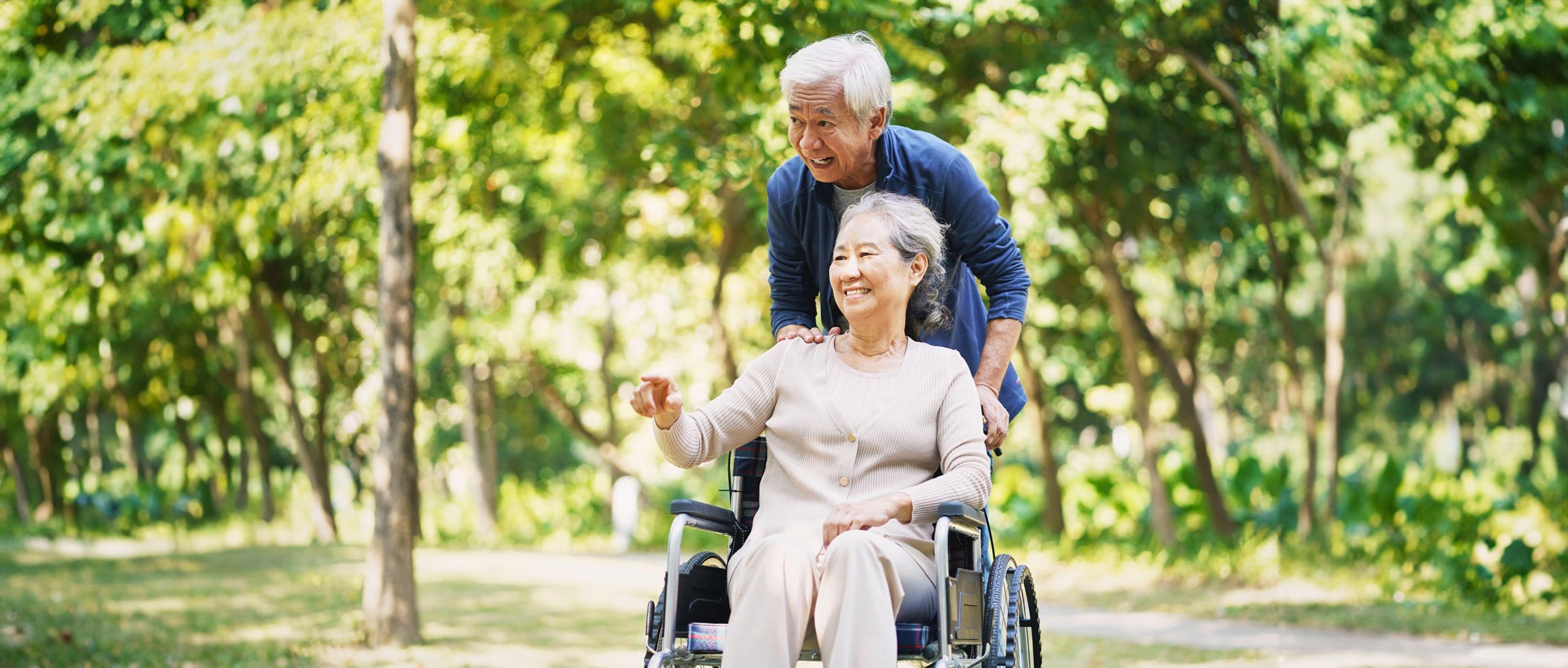Atypical parkinsonism aka Parkinson’s Plus conditions
Multiple system atrophy (MSA) is a rare, progressive neurodegenerative disorder that affects the body’s involuntary functions, such as blood pressure, heart rate, bladder function, and motor control or striatonigral degeneration. MSA shares many symptoms with Parkinson’s disease, including slow movement, rigid muscles, and poor balance. The symptoms of MSA typically begin in adulthood, usually in the 50s or 60s, and can include:
- Stiff muscles and difficulty moving
- Poor coordination and balance issues
- Autonomic failure, leading to problems like postural hypotension (dizziness or fainting when standing up)
- Urinary and bowel dysfunction
- Changes in sweat production and body temperature control
- Sleep disorders, such as acting out dreams or abnormal breathing at night
- Visual disturbances
- Difficulty swallowing or chewing
- Sexual dysfunction
- Psychiatric problems, such as difficulty controlling emotions
MSA is categorised into two types based on the most prominent symptoms at diagnosis:
- Parkinsonian type (MSA-P): Similar to Parkinson’s with symptoms like tremors, slow movement, and stiffness.
- Cerebellar type (MSA-C): Mainly affects muscle coordination, leading to an unsteady gait and loss of balance.
The exact cause of MSA is not fully understood, but it involves the accumulation of the protein alpha-synuclein in the brain cells, which is also seen in other neurodegenerative diseases. There is no cure for MSA, and treatment focuses on managing symptoms to improve quality of life. You may take medications, go to physical therapy, and make healthy lifestyle changes. If you or someone you know is experiencing symptoms that could be related to MSA, it is important to seek medical attention for a proper diagnosis and management plan.
Progressive supranuclear palsy (PSP), also known as Steele-Richardson-Olszewski syndrome, is an uncommon brain disorder that causes serious problems with walking, balance, eye movements, and later with swallowing. It is a neurodegenerative condition that leads to the deterioration of brain cells, particularly in the midbrain and frontal lobe, which control movements and thinking.
The symptoms of PSP can include:
- loss of balance while walking
- inability to aim the eyes properly, often resulting in difficulty looking downward
- sensitivity to light
- slurred speech
- difficulty swallowing
- changes in behaviour
- memory problems
- sleep disturbances
- depression.
The exact cause of PSP is unknown, but it involves the accumulation of abnormal levels of the protein tau in the brain cells. This is similar to other neurodegenerative diseases like Parkinson’s and Alzheimer’s disease. There is no cure for PSP, but treatment options aim to manage symptoms and may include medications, physical therapy, speech and language therapy, and dietary changes.
If you or someone you know is experiencing symptoms that could be related to PSP, it is important to consult a healthcare provider for a proper diagnosis and management plan.
Corticobasal degeneration (CBD), also known as corticobasal syndrome, is a rare neurological disorder that causes progressive damage to specific areas of the brain, including the cerebral cortex and the basal ganglia. These regions are responsible for various functions such as movement, memory, and cognition. The condition typically leads to symptoms that may initially affect one side of the body but eventually progress to both sides.
Symptoms of CBD can include:
- Difficulty moving, which worsens over time
- Poor coordination and balance issues
- Stiffness and muscle jerks
- Abnormal postures of the hands or feet
- Difficulty swallowing
- Abnormal eye movements
- Trouble with thinking and language skills
- Speech problems, such as slow and halting speech
The disease progresses over six to eight years, and as it advances, individuals with CBD may lose the ability to walk. The underlying cause of CBD is often associated with the buildup of the protein tau in brain cells, leading to their deterioration. This is similar to other neurodegenerative diseases like Alzheimer’s disease and progressive supranuclear palsy (PSP).
There is currently no cure for CBD, and treatment focuses on managing symptoms. This may include medications, physical therapy, speech and language therapy, and dietary changes to help improve quality of life. If you or someone you know is experiencing symptoms that could be related to CBD, it is important to consult a healthcare provider for a proper diagnosis and management plan.
Pick’s disease primarily affects behaviour and language. It is a specific type of frontotemporal dementia (FTD) that typically occurs in people under 65 years old. Frontotemporal dementia (FTD) is an umbrella term used to describe a group of younger onset neurodegenerative conditions with typically affects people in their 40s, 50s, and 60s.
- Pick’s disease primarily impacts the frontal and temporal lobes of the brain and symptoms often manifests as changes in behaviour, personality, and social conduct.
- Some individuals experience difficulties in speaking or understanding language.
- While some cases are linked to specific gene mutations, most are sporadic (not inherited).
- Diagnosing Pick’s disease is challenging, both during life and postmortem. Although not curable, healthcare providers can manage certain symptoms
More information at:
Other movement disorders
It’s important to note that both ET (Essential Tremor) and Parkinson’s are movement disorders and sometimes they can be mistaken for each other. However, there are many differences between the two conditions, and proper and early diagnosis is important for receiving the right treatment and support.
Prevalence:
ET is approximately 8 times more common than Parkinson’s.
Age of Onset:
Parkinson’s is most commonly diagnosed in people over the age of 60, while ET can occur at any age, even in childhood.
Tremor Characteristics:
In Parkinson’s, the tremor is mostly seen at rest and may be referred to as “resting tremor”. In ET, the tremor occurs mostly during action or movement, though this occurs in Parkinson’s as well.
Body Parts Affected:
The tremor in Parkinson’s usually starts on one side of the body and may develop on the other side as the disease progresses. In ET, the tremor usually affects both sides from the start of the condition.
Other Symptoms:
In ET, tremor is the primary symptom. In Parkinson’s, there are four primary symptoms that affect movement, including tremor, stiffness/rigidity, bradykinesia (slowed movements), and balance issues. Parkinson’s is also accompanied by many non-motor symptoms.
Genetics and Family History:
In cases of Parkinson’s, there is rarely a family history (estimated 10-20% of cases), but in ET, a family history of tremor is seen in more than 50% of cases.
Dystonia is characterised by involuntary muscle contractions that cause repetitive or twisting movements. The condition can affect one part of the body (focal dystonia), two or more adjacent parts (segmental dystonia), or all parts of the body (general dystonia). The muscle spasms can range from mild to severe and may be painful, interfering with daily tasks.
Symptoms of dystonia can vary but often include:
- Abnormal postures and movements
- Muscle spasms that are sustained or intermittent
- Pain and discomfort
- Difficulty with voluntary movements
- Impact on tasks such as writing (writer’s dystonia) or playing musical instruments (musician’s dystonia)
The exact cause of dystonia isn’t fully understood, but it may involve changes in the brain’s communication pathways. Some forms of dystonia are genetic, while others may result from conditions like Parkinson’s disease, stroke, or traumatic brain injury. Treatments for dystonia aim to improve symptoms and may include medications, physical therapy, and in some cases, surgery.
If you or someone you know is experiencing symptoms that could be related to dystonia, it’s important to consult a healthcare provider for a proper diagnosis and management plan. Early intervention can help manage the symptoms and improve quality of life.
Rapid Eye Movement (REM) Sleep Behaviour Disorder (RBD) is often associated with Parkinson’s. Here’s how they are related:
RBD and Parkinson’s:
RBD is characterised by acting out dreams or moving a lot in the REM stage of sleep. About 80% of people diagnosed with RBD develop synuclein-related disorders such as Parkinson’s or other atypical parkinsonism at some point in their lives.
Prevalence:
In the general population, the incidence of RBD is around 0.5%, compared to the prevalence of RBD in Parkinson’s patients, which has been reported to be around 50%.
Symptom Onset:
The diagnosis and symptom onset of RBD typically precedes the onset of motor or cognitive symptoms of Parkinson’s by years to decades.
Research:
There is a lot of research into RBD, and the next stage is figuring out how to treat it.
Please note that having RBD does not necessarily mean the person will have Parkinson’s later in life. It is the combination of RBD plus other early symptoms that can lead to a prodromal diagnosis.
Restless leg syndrome (RLS), also known as Willis-Ekbom disease, is a neurological condition that causes an uncontrollable urge to move the legs, typically due to uncomfortable sensations. It often occurs in the evening or nighttime hours when you’re sitting or lying down, and moving your legs can temporarily ease the unpleasant feeling.
Symptoms of RLS may include:
- Sensations that begin while resting, often after being seated in a car, plane, or movie theatre for an extended time.
- Relief that comes with movement, such as stretching, jiggling the legs, pacing, or walking.
- Symptoms get worse in the evening.
- Nighttime leg twitching, which may be associated with periodic limb movement of sleep, causing the legs to twitch and kick throughout the night while you sleep.
People with RLS typically describe the sensations as crawling, creeping, pulling, throbbing, aching, itching, or electric. Sometimes the sensations are difficult to explain, but they consistently describe the desire to move the legs. The exact cause of RLS is often unknown, but it may be related to an imbalance of the brain chemical dopamine, which sends messages to control muscle movement. Heredity can play a role, especially if the condition starts before age 40. Treatment for RLS may involve lifestyle changes, self-care steps, and medications to help relieve symptoms and improve sleep quality. If you think you may have RLS, it’s important to talk with your healthcare provider to confirm the diagnosis and discuss potential treatment options.

Donations
Your donation helps us to achieve our core business, to improve the lives of people affected by Parkinson’s in Australia through national advocacy, raising awareness and connecting people living with Parkinson’s, their families and carers, researchers and health professionals in the Parkinson’s community.

